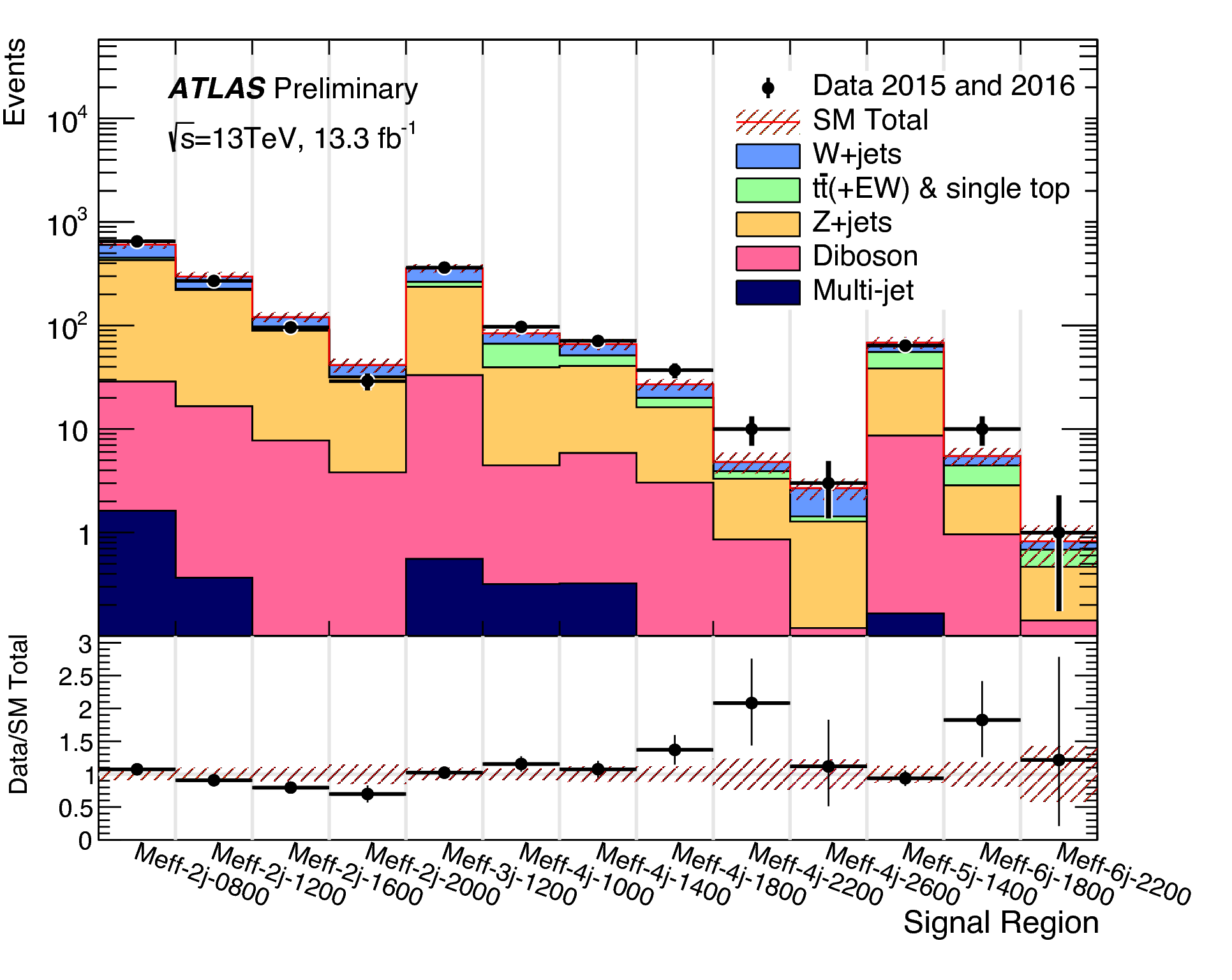Searching for new phenomena in final states with missing momentum and jets
4 August 2016 | By

The nature of dark matter remains one of the greatest mysteries in physics. While extraordinary, the Standard Model can not explain dark matter, whose existence is well established by cosmological measurements.
However, many theoretical explanations exist. These theories extend the Standard Model, enriching the current list of particles and interactions. In most of these extensions, a particle responsible for dark matter can be produced in high-energy proton-proton collisions either directly or as a decay product of other particles.
Inspired by so-called supersymmetric extensions of the Standard Model, ATLAS has developed a search for the production of a dark matter candidate particle as part of the decay of new postulated particles – the supersymmetric partners of the Standard Model quarks and gluons. The dark matter candidate is not expected to interact much with matter or we would have already seen it in dedicated experiments. Thus, once produced, it would leave the ATLAS detector unseen. Its production can, however, be inferred by imposing the conservation of the momentum in a plane perpendicular to the proton beam: the total transverse momentum has to sum up to zero, as it is zero before the proton-proton collision – if it is not zero, something has gone undetected. Many other particles are expected to be produced in such events, and manifest themselves as collimated jets of particles.
Inspired by so-called supersymmetric extensions of the Standard Model, ATLAS has developed a search for the production of a dark matter candidate particle
ATLAS physicists are looking for hints of this dark matter candidate in searches for large amounts of missing transverse momentum produced in association with up to six high-energy jets. This analysis was repeated several times during the LHC Run 1, and an improved version is now probing the higher-energy Run 2 collisions. Enormous care has been taken, studying which known processes could lead to a similar topology to mimic new phenomena.
The figure shows the comparison between the predicted and observed event yields for selections with different number of jets and different energy thresholds. The prediction agrees everywhere with the observed yields, implying that - so far - no signal exists that is strong enough to be detected. Deviation from the prediction observed in the regions with four and six jets, although interesting, are at the moment too small to be considered relevant indications of new phenomena at work.
Links:
- Searches for SUSY in events with jets and ETmiss (ATLAS-CONF-2016-078): https://atlas.web.cern.ch/Atlas/GROUPS/PHYSICS/CONFNOTES/ATLAS-CONF-2016-078/
- Find all ATLAS 13 TeV results for 2016 summer conferences: https://twiki.cern.ch/twiki/bin/view/AtlasPublic/Summer2016-13TeV



